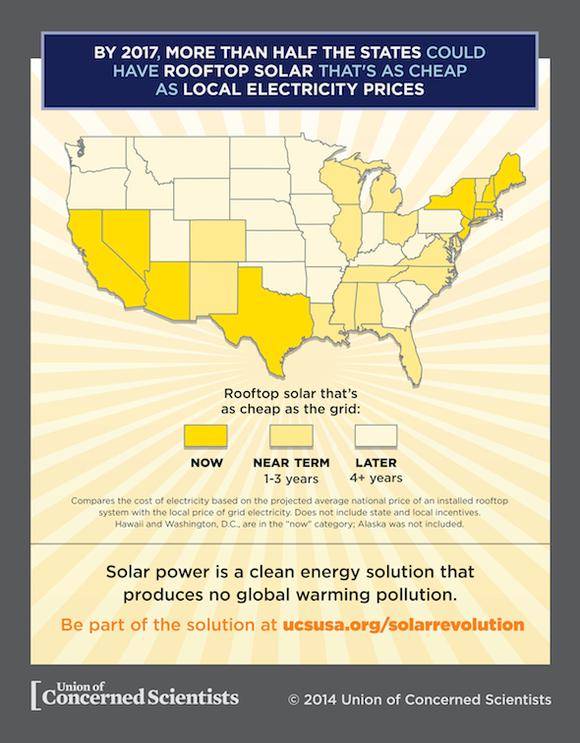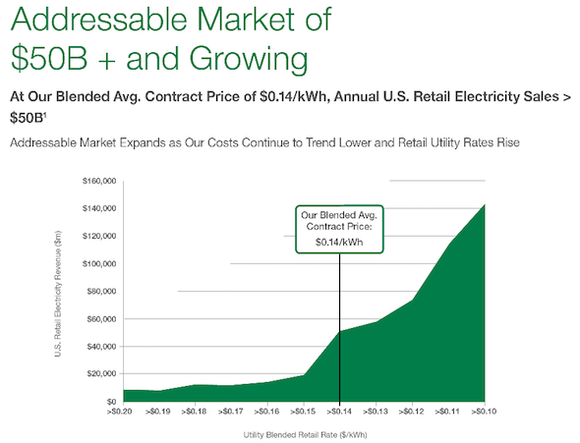ScienceRocks
Democrat all the way!
- Banned
- #1
Why 2015 Will Be the Year of Solar Energy
Travis Hoium
Dec 31st 2014 1:23PM
Updated Dec 31st 2014 1:24PM
Why 2015 Will Be the Year of Solar Energy - DailyFinance

Lester Lefkowitz
Hopefully, Oregon can grow from its tiny 66mw to a more respectable gw level in the next few years. Wind is already 12.6% of all energy for our state! Lets get solar high enough to close down broadman coal plant!
Wind is already 12.6% of all energy for our state! Lets get solar high enough to close down broadman coal plant!
Travis Hoium
Dec 31st 2014 1:23PM
Updated Dec 31st 2014 1:24PM
Why 2015 Will Be the Year of Solar Energy - DailyFinance

Lester Lefkowitz
Whether you realize it or not, solar energy is becoming a more and more important part of our energy future. In 2013, 29 percent of new electricity-generating capacity in the U.S. was solar energy, and so far in 2014, 36 percent of new capacity is solar.
Falling costs and improving technology will drive wider adoption, and 2015 could be a tipping point, bringing the solar industry to new parts of the country.
The Year Solar Caught On in the U.S.
2014 has been the start of consumers and utilities alike understanding the positive impact solar can make. GTM Research expects about 6.5 GW of solar energy to be installed in the U.S. in 2014, enough to power nearly 1.1 million homes. But over half of those installations fall in a relatively small area in California and Arizona, so this isn't a nationwide trend -- yet.
You can see below that 10 states (not including Hawaii, where solar has long been cost-competitive) are now seeing residential solar systems cost-competitive with the grid, and by 2017 the estimated number jumps to 28 states. In 2015, a growing infrastructure from solar installers will bring solar to new states, expanding the industry's reach.

Union of Concerned Scientists
Expansion Plans Kicking into High Gear
The solar industry knows that more states are seeing competitive prices and is expanding quickly to fill the need, especially in the residential market. SolarCity (SCTY) and Vivint Solar (VSLR) install more than half of the residential solar systems installed in the U.S. today, and they both have big expansion plans in 2015.
SolarCity expects to grow from 168,000 customers in September 2014 to over 1 million customers by mid-2018. As the company showed in a recent presentation, its addressable market grows exponentially as it cuts costs. SolarCity's costs today, including sales and general costs, are $2.90 per watt, down 26 percent from just two years ago. If costs continue to fall at anywhere near that rate, the company should be able to keep growing.

SolarCity
Vivint Solar was founded just three years ago, but it's already grown into the second-largest solar installer in the country, with operations in seven states. Next year, it plans to open another 20 new sales and operations offices, growing beyond a high concentration in Massachusetts, New Jersey, and New York.
States to watch in the residential solar market next year include Nevada, Texas, and Florida, which have only been small players in residential and commercial solar until now but have high solar insolation and relatively high energy costs.
Rooftops Aren't the Only Place Solar Is Popping Up
Residential solar is getting most of the attention in the media, but it's actually large utility-scale projects where the biggest impact is coming. These projects account for over half of all solar installed, and states you'd never imagine are starting to see solar growth.
Minnesota, Colorado, North Carolina, and Oregon have made solar more cost-effective through policy that gives incentives for utilities to adopt solar and policies that make solar energy cost-effective and easy to connect to the grid. Growth in these states won't likely come on rooftops; it'll be ground-mounted small utility-scale projects that gain adoption, because they're lower-cost than residential solar.
Hopefully, Oregon can grow from its tiny 66mw to a more respectable gw level in the next few years.

